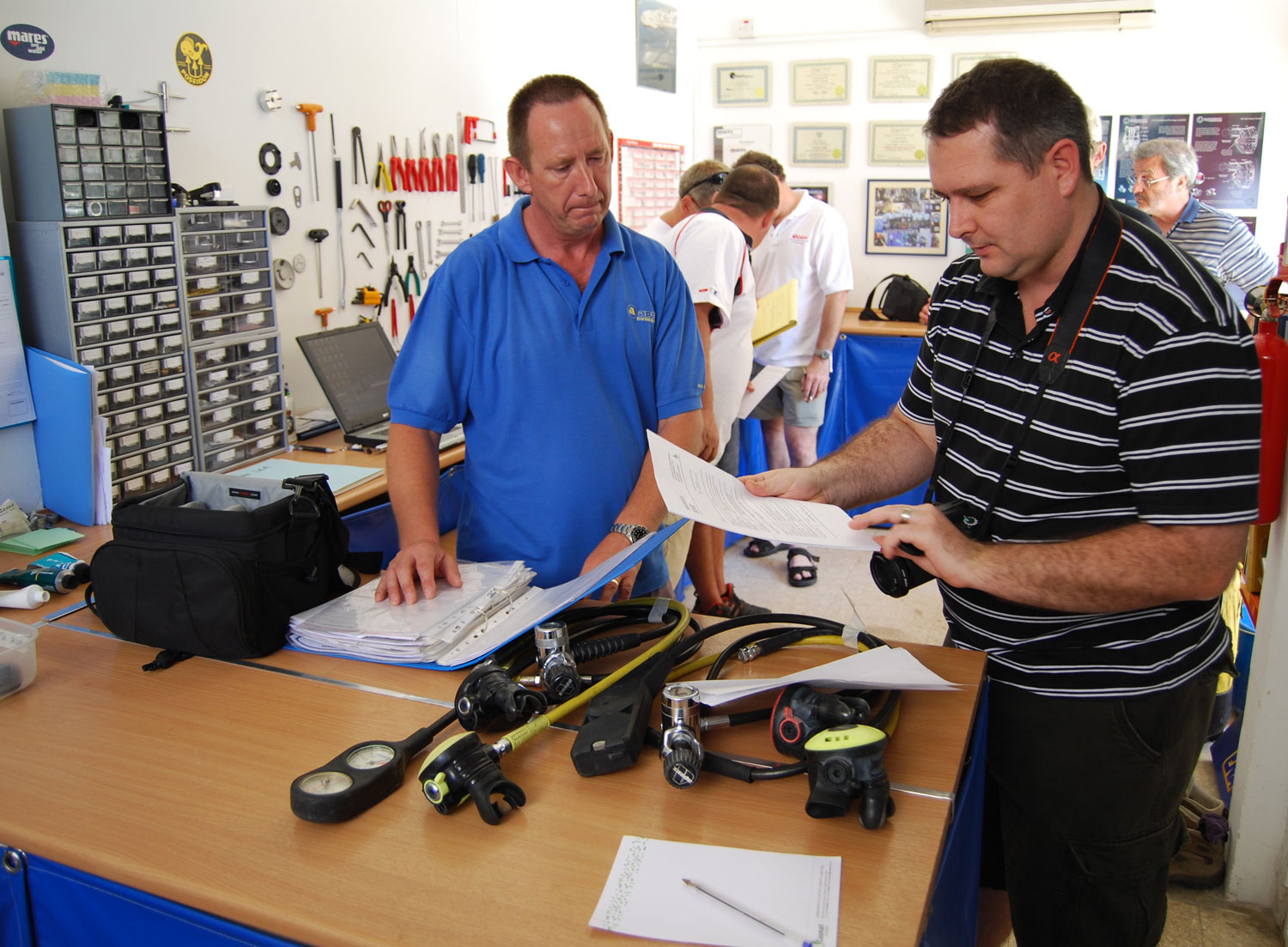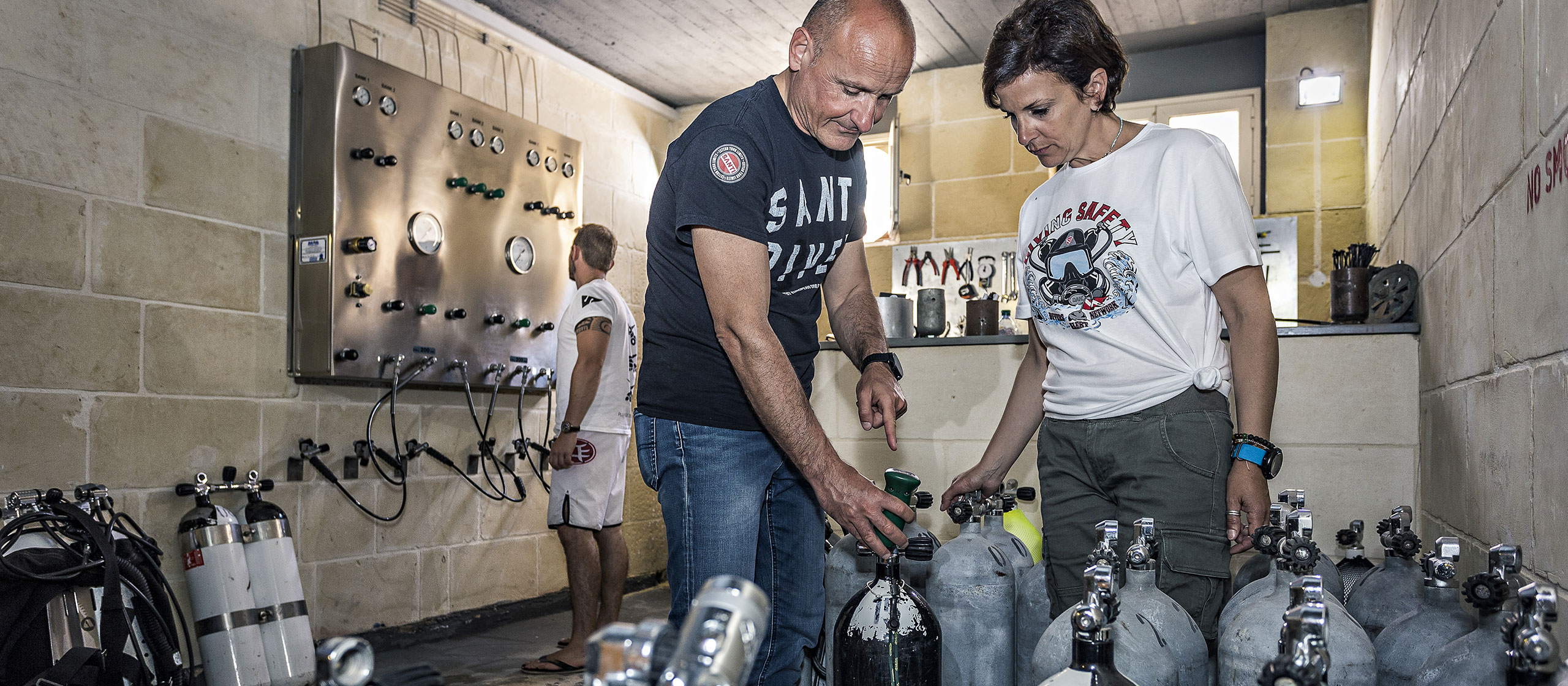Risk mitigation: DAN’s Dive Safety Officer
To mitigate a risk, one must be able to understand and identify hazards and perform a risk assessment, but these specific skills are not a part of any kind of scuba diving course and require additional training.
Experience helps in understanding risks present in dive operations, but it will take years and accidents may happen before risks can be adequately assessed. For obvious reasons, it does not make sense to wait for accidents to happen, before implementing changes to avoid such accidents from happening again.
While clients expect that dive operations mitigate risks, practically this is rather problematic as there are many aspects to take into consideration and finding somebody who can take care of it can be challenging.

Where does one start to identify a hazard and assess a risk? What is important and what not? What can go wrong? How can you implement changes? How can you understand that a risk is acceptable or not?
DAN launched the Hazard Identification and Risk Assessment project aimed at making dive operations aware of possible hazards and consequently help them in assessing risks. An educational approach is used, but while it is rather easy to fulfil the HIRA level 1 requirements, it is less easy for many diving professionals to fulfil the level 2 requirements and even difficult to get to the 3rd level.
A hazard is anything that could cause harm.
A risk is a combination of two things – the chance that the hazard will cause harm and how serious that harm could be.
The Dive Safety Officer (DSO) Course
We have therefore developed a Dive Safety Officer (DSO) course, for diving professionals who want to elevate their dive safety knowledge and skills. Individuals who receive the DAN DSO course certification have learned to identify and assist in mitigating technical and operational risks in the complete range of dive-related activities. They will have undergone the needed training to perform a Hazard Identification and Risk Assessment and to improve safety standards in dive operations. Their role is an extension of the mission of DAN to prevent injuries, and those who assume this vital role will have the optimal level of competence and confidence to perform this function well.
During the course, candidates will not only learn about hazards and risks, but also technical, liability and medical issues are discussed. Other parts include: Occupational Health & Safety concerns, business planning and sustainability (including ecological responsibilities), emergency planning, Recompression chamber basics, how to write a safety manual and how to monitor a safety program. This and more is part of the 40 hours DAN DSO course. Participants will also have the opportunity to apply their knowledge thanks to some practical Hazard Identification and Risk Assessment skills.

The profile of a DSO
No person can operate successfully in a position where the business and personal expectations of their position are not clear. Knowledge, experience, personality traits and skills define their competence: a decision that must be taken by management. Of course this person’s position within the organisation needs to be clear too. It is the owner or the manager who is ultimately responsible for safety – not the DSO. The DSO’s job is to assess, advise, steer and monitor safety.
The DSO is a trained and knowledgeable person, requiring not only proper appointment, but perhaps also an individual career path. They can be a part of the business, or an external, independent consultant.
For more information about the DSO Program, contact the DAN Europe office at [email protected]
About the author
Guy Thomas is an expert Diving and First Aid Instructor Trainer and works full-time as Director of Safety Programs at DAN Europe, where he is responsible for the development and implementation of the DAN Europe Safety Initiatives. He also is a member of the Special Rescue Team of the Italian Red Cross and operates as a Helicopter Rescue Swimmer/Diver Medic, onboard a SAR helicopter of the Italian State Police.


